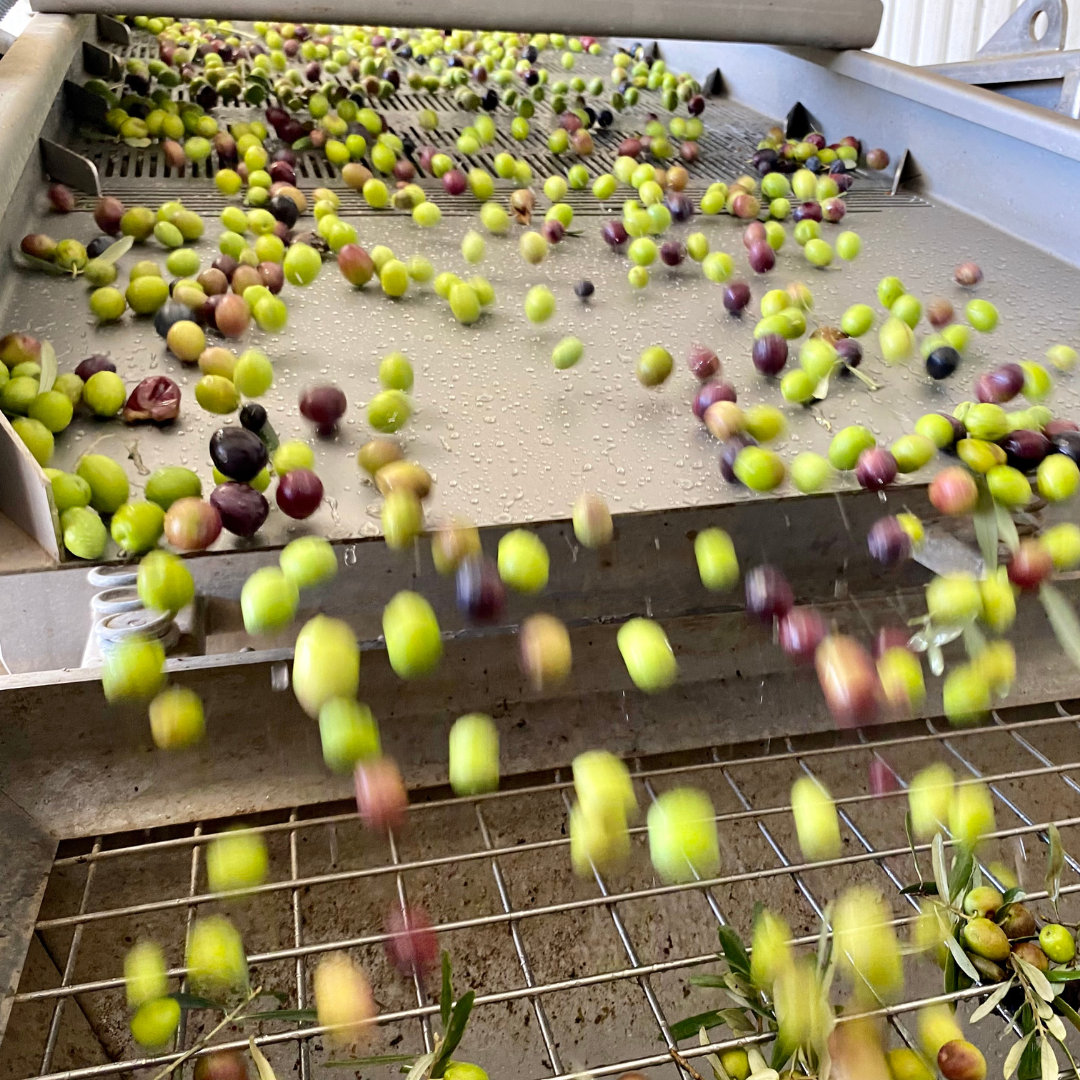The Process of Olive Oil Production
Producing high-quality and premium olive oil requires care and passion. Indeed, there are many easy and difficult paths to producing olive oil. However, producers who consciously choose the harder path and implement it correctly achieve success.
There are many types of olive oil that we are accustomed to seeing on the shelves, such as Extra Virgin Olive Oil (with acidity below 0.8%), Virgin Olive Oil (with acidity below 2.0%), Refined Olive Oil (processed thermally or chemically), and Riviera Olive Oil (a blend of refined and virgin oil). You can find detailed information about olive oil varieties in our article here, and learn more about different olive oil production methods and types.
Steps to Follow for the Best Olive Oil Production:
To turn olives into oil, specifically for producing Extra Virgin Olive Oil, the following methods should be followed:
Early Harvest / Ripe Harvest
Early harvest refers to the collection of olives when they are still green or beginning to turn pink, typically in September-October in the Northern Hemisphere, coinciding with the onset of cooler weather. Early harvest is crucial for olive oil production. Young olives contain high nutritional values, and the amount of antioxidants, known as polyphenols, is usually higher. The importance of cooler weather lies in the fact that for cold pressing, the maximum temperature should be around 25-27 degrees Celsius.
Ripe harvest involves collecting pink and purple olives for olive oil production. The taste is usually softer compared to early harvest olives. When harvested and processed under the right conditions, the fruitiness of the olive oil will still be high, but bitterness and pungency are generally lower compared to early harvest olive oils. You can find our sensory analysis of olive oil production here.
Both early and ripe harvests can be used for Extra Virgin Olive Oil production.
Handpicking and Preservation
Perhaps the most laborious but valuable stage in producing quality olive oil is handpicking. Olives should be collected without coming into contact with dust, soil, or foreign substances, and without being crushed. They should be collected in small, perforated baskets rather than sacks to prevent them from heating up and fermenting due to crushing. Crushed or spoiled olives should not be used for special olive oil production; this requires careful selection by meticulous eyes. Air circulation should be maintained to keep the olives cool. Olives should be taken to the pressing facility quickly without being left under the sun or in a hot environment. The success of this logistical operation is crucial for olive oil production. They should be pressed as quickly as possible, and before pressing, they should be kept in a cool and airy environment.
Cold Pressing
With advancing technology, very efficient machines are used for olive oil production. It is important to produce olive oil solely by physical means, i.e., by physically squeezing the juice from the olives without raising the temperature or using chemicals during pressing. An increase in temperature during pressing, prolongation of the process, and increased exposure to air negatively affect the nutritional values of olive oil. Contrary to popular belief, stone pressing is now an outdated method. Although stone pressing was a method used to obtain olive oil before the Industrial Revolution, today machines allow us to obtain olive oil from olives in the most natural way, providing maximum benefit. Machine pressing minimizes oxidation and fermentation that may occur in stone pressing, and minimizes contact of olive oil with foreign materials. It allows the olives to be crushed within the malaxer only, without raising the temperature significantly, facilitating oil extraction.
Filtration and Preservation
After olive oil production, the olive oil is preferably transferred to chrome tanks. Methods such as paper or soil filtration are used to separate foreign matter remaining in the olive oil. The olive oil's contact with oxygen is cut off by injecting gases such as nitrogen or ozone into the tank, preventing oxidation.
Bottling
With the help of machines, olive oil is transferred from tanks to bottles with minimal contact with air and sealed. Thus, olive oil production is completed. Small-scale (250ML, 500ML, 1LT, etc.) glass bottles are ideal for olive oil packaging. Larger containers should be divided into smaller ones before use to avoid contact with air and should be stored.
In addition to having a free fatty acid level below 0.8%, Extra Virgin Olive Oil is also determined by sensory analysis. In other words, the olive oil must be flawless. For the production of quality olive oil, each of the above briefly summarized steps must be meticulously followed. Otherwise, defects such as rancidity, mold, oxidation, and sediment in olive oil are inevitable. You can find our article on how defects occur in olive oil here.
Wishing you healthy and delicious days!
Ece Er Aydın


